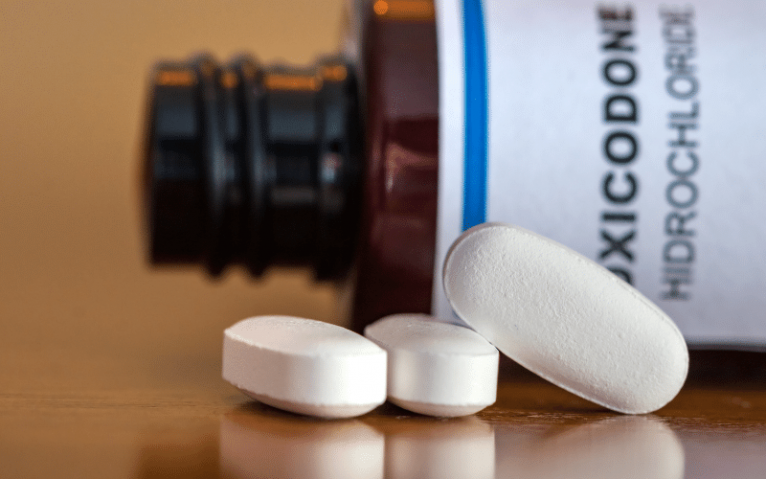Like many prescription painkillers, Percocet is a controlled substance with a high potential for abuse. A Percocet high can be intense and quickly develop a chemical and physical dependency on the drug. But how much Percocet do you need to get high? Read on to learn more about how dangerous the misuse of Percocet can be.
What is Percocet?
Percocet is a common prescription painkiller that combines oxycodone and acetaminophen. The drug alters how your body feels and responds to pain, which is why it’s used to relieve pain conditions or post-surgical chronic pain. However, it has a high potential for abuse, and people can quickly struggle with Percocet withdrawal symptoms if they try to quit.
Addiction to Percocet can lead to long-term damage and life-threatening effects. Unfortunately, it is challenging for people addicted to Percocet to successfully quit using the drug due to the withdrawal’s physical and psychological discomfort.
Like other prescription drugs, people usually start getting high on Percocet by exceeding the recommended dose. This can be either taking more pills at once or take pills more frequently. Previously, people would tamper with pills to snort or inject them.
It wasn’t until late 2010 that the Food and Drug Administration (FDA) requested changes to the pill form of oxycodone-based medications. After these formulation changes, the drug maker, Purdue Pharma LP, made breaking up the tablet almost impossible. Even if someone attempts to dissolve the tables for syringe use, the liquid becomes gummy and can’t be used as intended.
Because of this, people might try to get high on Percocet by mixing it with other substances. Common substances mixed with Percocet that could be dangerous include:
- Alcohol
- Other opioids
- Benzodiazepines
- Benadryl
- Stimulants
- Acetaminophen
The problem with Percocet is that its effects fade quickly. For a healthy person following their doctor’s instructions, Percocet is highly effective. It starts working within 15-20 minutes after oral ingestion. The effects of oxycodone reach their peak point in 30-60 minutes and last for up to 6 hours. However, for addicts, once the drug reaches its peak point, they’re likely to take more pills to maintain that all-time high.
After your body becomes dependent, you’re likely to need more pills to experience the same type of high. Plus, odds are you need more drugs because you feel or believe your high lasts shorter.
Like other opioids, Percocet has a half-life of about 5 hours. This means a half dose of Percocet would take about four hours to leave your system. However, for someone who takes Percocet to get high, it might take over 20 hours to eliminate all Percocet from the system. But, if you’re a chronic user, odds are you have more Percocet in your system than your organs can handle. In this case, it might take longer for all traces of Percocet to leave your system.
In a urine test, Percocet can be detected for 48 hours after the last dose. It can be found in the blood for about a day. However, in hair, oxycodone can be seen in hair follicles for up to 30 days. But, this hair test is not as reliable as urine or blood tests.
When someone stops taking Percocet, they can experience a wide range of side effects, including heart failure and mental health adversities. Of course, these effects can vary from person to person.
Percocet addiction can lead to a deadly overdose. Approximately 40mg of Percocet can precipitate overdose in someone without an opioid tolerance or dependence. That’s roughly 4 to 16 pills depending on the dosage.
Interestingly, people are much more likely to overdose from acetaminophen than oxycodone while abusing the drug. Most pills have 100 times more acetaminophen than oxycodone in their formulation. By the time someone overdoses, they’re likely to be experiencing liver toxicity due to an acetaminophen overdose.
Ideally, the daily acetaminophen dosage shouldn’t exceed 4,000mg and no more than 1,000mg at a time. While overuse of acetaminophen won’t immediately kill anyone, it could lead to severe liver damage that’s often not noticeable until it’s too late.
Percocet is a Schedule II drug, more addictive and more potent than Vicodin. As stated before, it takes 40 mg of oxycodone before fatal overdose symptoms kick in, but the real danger lies in liver toxicity from the acetaminophen. While these numbers might seem high, those who use a prescription drug take four, on average. Imagine that number for those with a substance use disorder. When the body becomes tolerant, a person can easily take too many pills to achieve a high.
Finding Treatment for Addiction
Percocet addiction does not have to be a death sentence; people can seek treatment and find sobriety in many cases. However, because of the severe consequences of withdrawal symptoms, having the right support system is critical to prevent deadly outcomes.
Most people starting their Percocet addiction treatment are recommended a detox program paired with a partial hospitalization program (PHP) that eases withdrawal symptoms and provides patients with a secure and supervised environment to begin their recovery. Many treatment facilities can help structure the right treatment plan. At Lighthouse Recovery Institute, our addiction treatment center offers:
- Inpatient Programs: These offer a temptation-free environment to help people in recovery. In this case, people check into a living drug rehab facility, and they attend meetings and therapy sessions while remaining in a supervised environment.
Medication-Assisted Treatment: While rare, long-time addicts might experience worse withdrawal symptoms. To prevent these symptoms from harming them physically and psychologically, a physician might recommend specific prescription medications to help through the withdrawal process under a medically supervised program.
If you or someone you love is struggling with substance abuse, ask for help immediately. Please, call Lighthouse Recovery Institute today at 866-308-2090 and speak with our addiction specialists to learn more about our comprehensive and personalized addiction treatment programs.









